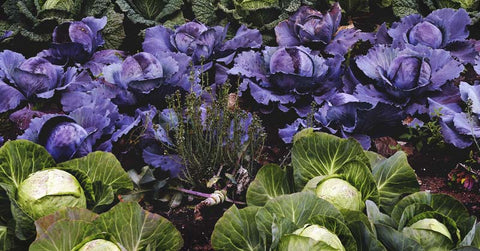Wildflower meadows are not only a sight to behold but also a haven for pollinators and wildlife, making them a popular choice for eco-conscious gardeners. These vibrant patches of natural beauty can transform any landscape, adding color, texture, and biodiversity. In this blog, we'll explore the enchanting world of wildflower meadows and discuss how you can create your slice of natural paradise right in your backyard.The following content also has some reference value for raised garden beds.
Understanding Wildflower Meadows
A wildflower meadow is a diverse planting of native or non-native wildflowers, grasses, and other flowering plants. Unlike traditional manicured lawns or formal gardens, wildflower meadows are designed to mimic natural ecosystems, providing habitat for a wide range of insects, birds, and small mammals. These dynamic and ever-changing landscapes offer seasonal interest, with different flowers blooming throughout the year.

Creating Your Meadow Garden
Creating a wildflower meadow is a rewarding and relatively straightforward process. Here's how you can get started:
- Selecting the Site: Choose a sunny spot in your landscape that receives at least six hours of sunlight per day. Ideally, the site should be well-drained with minimal competition from trees and shrubs.
- Preparing the Soil: Prepare the soil by removing existing vegetation and weeds. Loosen the soil with a garden fork or tiller to improve aeration and drainage. Avoid using herbicides or pesticides, as these can harm beneficial insects and wildlife.
- Choosing Wildflower Seeds: Select a mix of native wildflower seeds suited to your region and soil type. Look for mixes specifically designed for meadow gardens, which typically include a variety of annuals and perennials that bloom at different times throughout the growing season.
- Sowing the Seeds: Scatter the wildflower seeds evenly over the prepared soil, either by hand or using a seed spreader. Lightly rake the seeds into the soil to ensure good seed-to-soil contact.
- Watering and Maintenance: Water the newly sown seeds thoroughly to help them germinate. Once established, wildflower meadows require minimal maintenance, as they are designed to be self-sustaining. However, you may need to water during dry spells and remove any invasive weeds that threaten to take over.
- Enjoying the Beauty: Sit back and watch as your wildflower meadow bursts into bloom, attracting a myriad of pollinators and wildlife. Take time to observe the ever-changing tapestry of colors and textures, and revel in the natural beauty of your landscape.

Benefits of Wildflower Meadows
Wildflower meadows offer a host of benefits for both people and the environment:
- Biodiversity: Wildflower meadows support a diverse array of plant and animal species, including pollinators such as bees, butterflies, and hummingbirds. By providing habitat and food sources, meadow gardens help bolster local biodiversity.
- Low Maintenance: Once established, wildflower meadows require minimal maintenance compared to traditional lawns and gardens. They are drought-tolerant, pest-resistant, and self-seeding, reducing the need for watering, fertilizing, and mowing.
- Water Conservation: Deep-rooted wildflowers and grasses help prevent soil erosion and improve water infiltration, reducing runoff and conserving water. Meadow gardens are an eco-friendly alternative to water-intensive lawns and ornamental gardens.
- Visual Appeal: Wildflower meadows add visual interest and seasonal color to the landscape, providing a beautiful backdrop for outdoor living and recreation. They create a sense of tranquility and harmony with nature, enhancing the overall aesthetic of your property.
Tips for Success
To ensure the success of your wildflower meadow, consider the following tips:
- Choose Native Species: Select native wildflowers and grasses adapted to your local climate and soil conditions. Native plants are well-suited to the natural environment and require less maintenance than non-native species.
- Plant Diversity: Aim for a diverse mix of plant species to maximize biodiversity and resilience. Include a variety of flowers, grasses, and herbs that bloom at different times throughout the year to provide continuous food and habitat for wildlife.
- Avoid Fertilizers and Chemicals: Wildflower meadows thrive in nutrient-poor soils, so avoid using fertilizers or chemicals that can disrupt the delicate balance of the ecosystem. Let nature take its course and allow the meadow to develop naturally over time.
- Be Patient: Wildflower meadows take time to establish and may not reach their full potential until the second or third year. Be patient and allow the meadow to evolve and mature at its own pace, enjoying the process along the way.

Conclusion
In conclusion, wildflower meadows offer a sustainable and beautiful landscaping option for eco-conscious gardeners. By creating a meadow garden in your landscape, you can support biodiversity, conserve water, and enhance the natural beauty of your property. Whether you have a small backyard or a sprawling estate, there's always room to sow the seeds of a wildflower meadow and watch as it blooms into a vibrant tapestry of color and life. So why wait? Start planning your meadow garden today and reap the rewards of nature's beauty for years to come.









